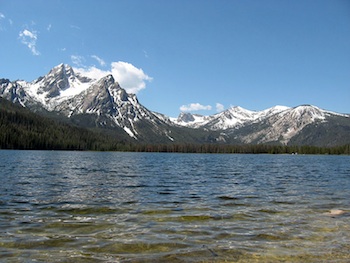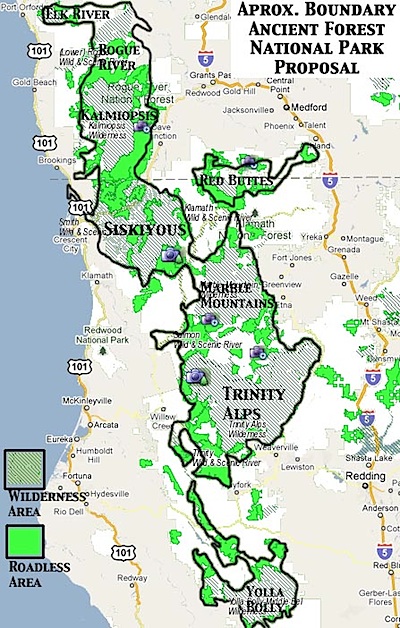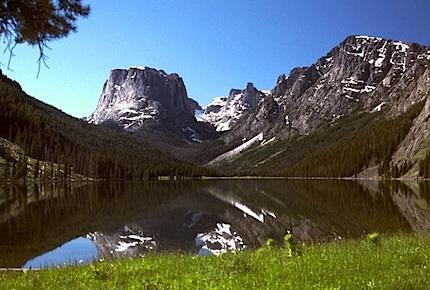Creating national parks doesn't happen every day. Lately, it seems the quickest way to create one is to legislatively redesignate a national monument as a national park (See Pinnacles National Park). But it doesn't hurt to dream, does it?
Here are five picks from the Traveler for new national parks. We offer up these nominees without consideration to fiscal impact because once you start to consider the costs -- mainly economic costs, but also political -- the possible can become impossible. With that understood, we view the following locations as truly spectacular places that should be preserved for future generations.
* Wind River Range, Wyoming
The Wind River Range in west-central Wyoming visibly defines spectacular. With 40 peaks that soar above 13,000 feet, including the state's highest point at 13,809 feet, glaciers, grizzlies, elk, bighorn sheep, lakes and trout streams, this craggy range runs roughly 100 miles north to south and 30 miles east to west.
Currently managed by the U.S. Forest Service, the range contains officially designated wilderness and is one of the country's premier hiking and backpacking areas. The range also harbors the headwaters of the Green River.
You can lose yourself in the Winds for days on end, spot North America's largest herd of bighorn sheep, find challenging climbing routes, or fancy yourself as a latter-day mountain man.
* Sawtooth National Recreation Area, Idaho
This 756,000-acre NRA long has been considered for inclusion in the National Park System. Indeed, back in 1911 a group of women in Idaho called for such a move, according to a history of the NRA's creation.

Stanley Lake in the Sawtooth NRA. Photo by Fredlyfish4 via Wikipedia.
In 1960, then-U.S. Sen. Frank Church introduced legislation to have the area considered for park status, and six years later even introduced a bill calling for Sawtooth National Park, but local opposition derailed it.
This wide expanse of wild lures river runners, climbers, backcountry skiers, anglers, backpackers and more. Cyclists challenge themselves on attacking the highway over Galena Summit, while families carry on long traditions of camping at Redfish Lake.
New England needs another national park, and the one proposed for the North Woods would not just be gorgeous, but would benefit wildlife species such as Canada lynx, Atlantic salmon and the eastern timber wolf threatened with extinction for lack of habitat and protect the "wild forests of New England."
The hardwood forests, lakes, and rivers would help build a strong recreation sector that would pump money into the surrounding towns. The streams and lakes here long have been plied by canoeists.
Talk of creating such a national park extends back over two decades. Proponents, along with pointing to the natural resources that could be protected, believe the cachet of a "Maine North Woods National Park" would bolster the region's economy through businesses that cater to park visitors.
* Ancient Forest National Park, California and Oregon
With climate change under way, protecting migrational routes, and providing migrational routes, for wildlife and even plants is vital to help ensure their survival.

The boundaries of the proposed Ancient Forest National Park run from Oregon south into California.
Park Service Director Jon Jarvis back in August of 2011 called for establishing "a national system of parks and protected sites (rivers, heritage areas, trails, and landmarks) that fully represents our natural resources and the nation's cultural experience." He also cited the need for creation of "continuous corridors" to support ecosystems.
The proposed 3.8-million-acre Ancient Forest National Park spanning parts of southern Oregon and northern California would meet those goals.
Within its proposed borders there already exist officially designated wilderness and roadless areas, places perfect for both recreation and wildlife.
The proposal is to set aside a solid block of land 3.8 million acres from the Rogue River in Oregon to the Eel River in California. It will forever allow the free migration of species from the coast and Redwood National Park to semi arid inland canyons. The park would include already established wilderness areas and already designated critical wildlife areas along with about 1 million acres of unprotected inventoried roadless areas.
* San Rafael Swell, Utah
Talk of turning the Swell into a national park has simmered for decades, going back to the 1930s when local officials proposed a "Wayne Wonderland National Monument." The proposal went nowhere, for the Swell, but is pointed to as an impetus for Capitol Reef National Park.
Nevertheless, the wondrous landscape of colorful reefs of rock, deep canyons, and sandstone walls bearing ancient pictographs remain. So, too, do the tales of outlaws such as Butch and Sundance losing possees by galloping into the maze of canyons. Within the Swell you can find ancient granaries, stone arches, bald eagles, bighorn sheep, feral horses and mules, homesteader cabins, and old mining operations. There are opportunities for canyoneering, river running, backpacking and day hiking and more.
Today there are fewer and fewer pristine and preserved areas left in the country, a fact that has the clock ticking on the few remaining places that deserve national park status. While much opposition no doubt exists to each of the above proposals, they could be crafted in such a way to mollify many of the critics.
By creating a "national park and preserve," the enacting legislation could be written in a way to allow some traditional ways of life, whether they involve grazing livestock, hunting, or logging in a sustainable fashion. Communities could remain in place, with the "park-and-preserve" boundaries excluding them.
What other places do you think should be added to the park system?




Comments
Has anyone read Death in Yellowstone? The first page of Chapter 1 explains why no one should take a dog to that particular park. I love my dog, but she stays home when we travel.
There is a decent website about NF camping, and there are some good discussions on the message board, although it is a bit slow...
www.forestcamping.com
Michael,you have lot's of facts and figures that you throw around.Now just tell us what tree hugging group pays your way.
Shoot why don't we just declare every spare piece of land a Natl Park.
When I was younger I could take those longer hikes into the back woods but that was back in the 80's.
It always comes down to the money and who wants what.Eno's wasn't far from the truth and that was 1917.
ypw,thank you I'm not always good at putting my thoughts on paper.But you sited great examples on why this place and that place should be or not be a Natl Park.Thanks You from quiet one
hikertom, TAKE A HIKE!!!!!!!!!!!!!!!!!!!!!!!!!! tommorrow and bring back some thoughts that are not so nasty.
I have made my points and everytime you have a nasty reply.once again Peace
Quiet please, nothing nasty in hikertom's comment that can be seen from this chair. Just an observation of how to flee the crowds.
You'll get ticketed? Please, don't hold us in suspense.
The dog jumped into a 202-degree hot spring...and the owner followed to save him. Dog died, as did the owner.